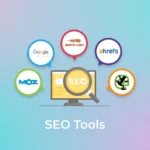Welcome to our blog on how to grow your business! As an entrepreneur or small business owner, you know that growth is essential for long-term success. Whether you’re just starting out or looking to take your company to the next level, understanding the strategies and techniques for business growth is crucial. In this article, we’ll explore various ways in which you can expand your customer base, increase brand awareness, and ultimately drive revenue. So let’s dive in and discover how you can unlock the potential of your business!
Importance of Business Growth
Business growth plays a vital role in the success of any organization. It’s not just about making more money or increasing market share; it’s about staying competitive and adapting to changing customer needs. When your business grows, it opens up new opportunities for expansion, innovation, and profitability.
One of the key benefits of business growth is increased revenue. As you attract more customers and expand your product offerings or services, you have the potential to generate higher sales and profits. This allows you to reinvest in your company, hire more employees, upgrade equipment, or explore new markets.
Moreover, business growth helps build credibility and brand recognition. When customers see that your company is thriving and expanding its reach, they are more likely to trust your products or services. A strong brand identity can differentiate you from competitors and create a loyal customer base.
Additionally, growing your business enables you to tap into new markets and reach a wider audience. By diversifying your customer base geographically or demographically, you reduce dependency on a single market segment, reducing risk factors associated with economic fluctuations.
Furthermore, achieving sustainable growth requires constant innovation and adaptation to market trends. By staying ahead of industry changes through research and development efforts or introducing innovative solutions/products/services,you can carve out a unique position in the marketplace
Overall,business growth is crucial because it not only boosts financial performance but also enhances competitiveness,reputation ,opportunities,and long-term sustainability.
Understanding Your Market and Target Audience
One of the key aspects of growing your business is understanding your market and target audience. This knowledge allows you to tailor your products or services to meet their specific needs, increasing the likelihood of attracting and retaining customers.
To begin, conduct thorough market research to gain insights into industry trends, competitors, and customer preferences. This information will help you identify gaps in the market that you can fill with innovative solutions. By understanding what sets your business apart from others in the industry, you can effectively position yourself as a unique and valuable option for consumers.
In addition to conducting market research, it’s crucial to define your target audience. Consider demographics such as age, gender, location, income level, and interests when creating buyer personas. Understanding who your ideal customers are enables you to craft targeted marketing messages that resonate with them.
Once you have a clear understanding of your target audience’s preferences and pain points, use this information to develop strategies that effectively reach them. Utilize digital marketing tools like social media platforms and email marketing campaigns to engage with potential customers directly.
Regularly assess consumer feedback through surveys or monitoring online reviews to ensure that your offerings continue to meet their evolving needs. This ongoing feedback loop allows for continuous improvement and helps maintain strong relationships with loyal customers while attracting new ones.
By thoroughly understanding both your market landscape and target audience demographics/preferences/needs/desires/etc., you set yourself up for success in growing your business organically over time!
Developing a Strong Brand Identity
Building a strong brand identity is crucial for the growth and success of any business. Your brand is more than just your logo or tagline; it encompasses the values, personality, and essence of your company. It is what sets you apart from your competitors and resonates with your target audience.
To develop a strong brand identity, start by understanding who your target audience is. Conduct market research to gain insights into their needs, preferences, and pain points. This will help you create messaging that speaks directly to them.
Once you have a clear understanding of your target audience, focus on crafting a unique brand voice and visual identity that aligns with their interests and values. Consistency across all touchpoints – from your website to social media profiles – is key in building trust and recognition.
Another important aspect of developing a strong brand identity is storytelling. Use compelling narratives to connect with your audience on an emotional level. Share stories about how your products or services have made a positive impact on customers’ lives.
Don’t underestimate the power of customer experience in shaping your brand identity. Deliver exceptional service at every interaction point to leave a lasting impression on customers.
By investing time and effort into developing a strong brand identity, you can establish yourself as an industry leader and attract loyal customers who resonate with what you stand for.
Utilizing Social Media and Digital Marketing Strategies
Social media and digital marketing strategies have become essential tools for businesses looking to grow and expand their reach. With billions of people actively using platforms like Facebook, Instagram, Twitter, and LinkedIn, it’s no wonder that businesses are leveraging these channels to connect with their target audience.
One of the key advantages of utilizing social media is its ability to provide a direct line of communication between businesses and consumers. By creating engaging content and interacting with followers, businesses can build brand loyalty and establish themselves as industry leaders.
Digital marketing strategies go hand in hand with social media efforts. From search engine optimization (SEO) to pay-per-click advertising (PPC), there are various techniques that can be employed to increase visibility online. By optimizing website content for relevant keywords or running targeted ads on search engines or social media platforms, businesses can attract more visitors and generate leads.
Another advantage of digital marketing is its ability to track and measure results in real-time. Through analytics tools, businesses can gain insights into which campaigns are driving the most traffic or conversions. This data allows them to refine their strategies continuously and allocate resources effectively.
Furthermore, social media provides an opportunity for businesses to engage directly with customers through comments, messages, or reviews. This feedback helps companies understand customer preferences better while providing a platform for addressing concerns promptly.
In conclusion,
utilizing social media and digital marketing strategies is crucial for business growth in today’s competitive landscape. These platforms offer direct communication channels, increased visibility online through SEO & PPC techniques, real-time tracking capabilities through analytics tools,and opportunities for customer engagement – all contributing factors towards building a successful brand presence online.
Expanding into New Markets and Diversifying Your Products or Services
Expanding into new markets and diversifying your products or services is a crucial step in growing your business. It allows you to tap into untapped customer segments and explore new opportunities for revenue generation.
When expanding into new markets, it’s important to conduct thorough market research. This will help you understand the needs, preferences, and behaviors of your target audience in that specific market. By gathering this information, you can tailor your products or services to meet their demands effectively.
Diversifying your offerings is another way to attract a wider range of customers. By offering additional products or services that complement your existing ones, you can cater to different customer needs and increase sales potential. For example, if you own a bakery and notice an increasing demand for gluten-free items in the market, introducing a line of gluten-free baked goods would be a smart move.
However, expanding into new markets and diversifying comes with its challenges. It requires careful planning and implementation to ensure success. You need to consider factors such as competition analysis, pricing strategies, distribution channels, and marketing campaigns tailored specifically for the new market segment.
In conclusion (not concluding), by strategically expanding into new markets and diversifying your product or service offerings based on consumer insights gained through research while considering various aspects like competition analysis etc., you can enhance growth prospects for your business.
Networking and Building Relationships with Other Businesses
Networking and building relationships with other businesses is a crucial aspect of growing your business. By establishing connections with like-minded professionals, you can tap into new opportunities, gain valuable insights, and create mutually beneficial partnerships.
One way to start networking is by attending industry events and conferences. These gatherings provide an excellent platform to meet potential collaborators and learn from experts in your field. Be proactive in introducing yourself, engaging in meaningful conversations, and exchanging contact information.
Another effective networking strategy is joining professional associations or business groups related to your industry. These organizations often host regular meetings and events where you can connect with peers who share similar goals or face similar challenges. Take advantage of these opportunities to forge strong relationships that can lead to referrals or collaborations down the line.
In today’s digital age, online networking has become increasingly important as well. Utilize social media platforms like LinkedIn to connect with professionals in your industry, join relevant groups or forums where you can contribute valuable insights and engage in discussions.
Remember that building relationships takes time and effort; it’s not just about seeking immediate benefits for your own business. Offer support, advice, or resources whenever possible without expecting anything in return – genuine generosity goes a long way when it comes to fostering lasting connections.
By actively participating in networking activities both offline and online, you’ll be able to expand your network of contacts within your industry while also gaining valuable knowledge from experienced individuals who have already achieved success.
The Role of Innovation in Business Growth
In today’s fast-paced and competitive business landscape, innovation is crucial for driving growth and staying ahead of the curve. It involves developing new ideas, products, or processes that disrupt the market and meet evolving customer needs.
Innovation sparks creativity and encourages employees to think outside the box. By fostering a culture of innovation within your organization, you can empower your team to come up with groundbreaking solutions that set you apart from competitors.
Embracing innovation also allows businesses to adapt to changing trends and technologies. By continuously improving existing offerings or introducing new ones, companies can stay relevant in an ever-changing marketplace.
Moreover, innovation opens doors to new opportunities. It enables businesses to identify untapped markets or niches where they can expand their reach and diversify their revenue streams.
However, it’s important not just to focus on product or service innovations but also on process innovations. Streamlining operations through automation or implementing efficient systems can significantly improve productivity and reduce costs.
Successful implementation of innovative ideas requires effective planning and execution. Companies should allocate resources for research and development activities while encouraging collaboration among different departments.
Furthermore, it’s essential for organizations to keep a pulse on industry trends by monitoring market dynamics, consumer behavior patterns, technological advancements, etc. This helps them anticipate future demands before they arise so they can proactively innovate accordingly.
Fostering a supportive environment that embraces risk-taking is vital for promoting innovation within an organization. Encouraging employees’ input while providing them with the necessary tools and training fosters creativity and empowers individuals at all levels of the company to contribute valuable ideas.
By prioritizing innovation as an integral part of business strategy, companies can unlock immense potential for growth while remaining agile in an ever-changing business landscape.
Measuring and Tracking Growth
Measuring and tracking growth is a crucial aspect of growing your business. It allows you to see how well your strategies are working and identify areas for improvement. Without proper measurement, it’s difficult to determine if your efforts are paying off or if adjustments need to be made.
One way to measure growth is by analyzing key performance indicators (KPIs). These can include metrics such as revenue, profit margins, customer acquisition rates, website traffic, and conversion rates. By regularly monitoring these KPIs, you can gain insights into the overall health and progress of your business.
Another important aspect of measuring growth is setting specific goals and objectives. This helps provide direction and focus for your efforts. By having clear targets in place, you can track your progress towards achieving them and make necessary adjustments along the way.
It’s also essential to utilize analytics tools that provide valuable data on customer behavior, demographics, and preferences. This information allows you to better understand your target audience and tailor marketing strategies accordingly.
Regularly reviewing financial statements like income statements, balance sheets, cash flow statements provides an overview of the financial health of the business.
Challenges of Growing a Business
Growing a business is an exciting journey filled with new opportunities, but it’s not without its challenges. As your business expands, you’ll encounter various obstacles that can hinder your growth and success.
One of the biggest challenges is managing cash flow. With increased expenses and investments in marketing, infrastructure, and talent acquisition, it’s crucial to ensure that your revenue keeps up with these demands. Without proper financial planning and budgeting, rapid growth can strain your resources.
Another challenge is maintaining consistent quality as you scale. When demand increases, there may be pressure to produce more at the expense of quality control. It’s important to invest in systems and processes that allow you to maintain high standards while meeting customer expectations.
As your business grows, so does the need for effective leadership and management. Delegating tasks and responsibilities becomes essential but finding capable individuals who align with your vision can be challenging. Developing strong teams through hiring or training becomes critical for sustained growth.
Market competition also intensifies as businesses expand. Staying ahead requires constant innovation and adapting to changing consumer needs while keeping an eye on competitors’ strategies. This means investing in research and development to stay relevant in a competitive market.
Expanding into new markets presents unique challenges such as cultural differences, legal requirements, or logistical complexities. Thorough market research coupled with strategic planning helps overcome these hurdles successfully.
Scaling a business often involves letting go of certain aspects of day-to-day operations that founders once handled personally. Trusting others with key responsibilities can be difficult but necessary for growth beyond individual capacity.
Conclusion
Growing a business is an ongoing process that requires strategic planning, adaptability, and perseverance. By understanding your market and target audience, developing a strong brand identity, utilizing social media and digital marketing strategies, expanding into new markets, networking with other businesses, embracing innovation, and consistently measuring and tracking growth, you can position your business for success.
However, it’s important to acknowledge that growing a business also comes with its fair share of challenges. From managing cash flow to scaling operations effectively and staying ahead of the competition, entrepreneurs must be prepared to navigate these obstacles with resilience.
Ultimately though, the rewards of business growth are well worth the effort. By implementing these strategies and continuously seeking opportunities for improvement and expansion while staying true to your core values as a company; you can create a thriving enterprise that not only meets the needs of your target audience but exceeds their expectations as well.
So take action today! Invest in your business’s growth by adopting these tactics into your overall strategy. Remember that success doesn’t happen overnight – it’s a journey. Stay focused on continuous improvement and always strive for excellence in everything you do. With dedication and perseverance combined with effective growth strategies; there is no limit to what you can achieve in growing your business!










